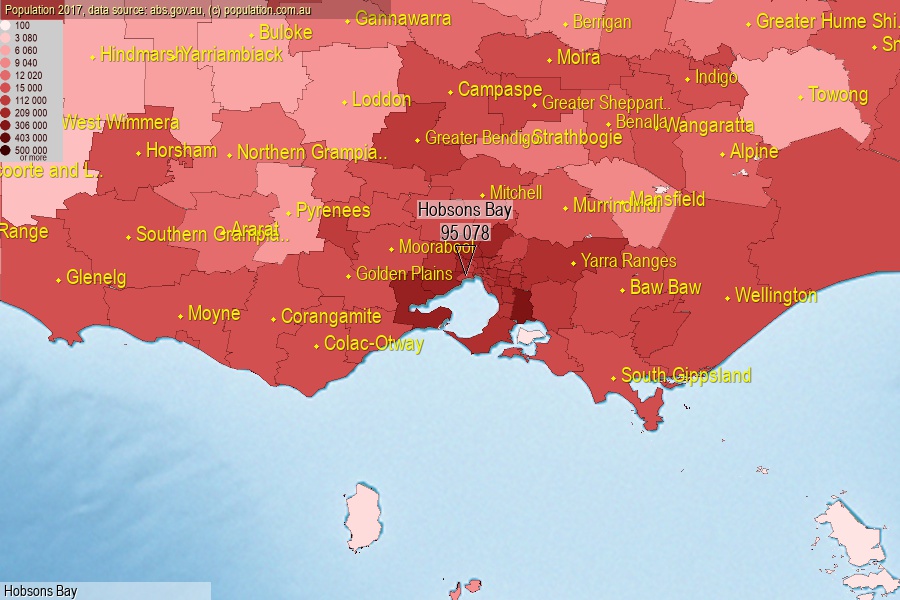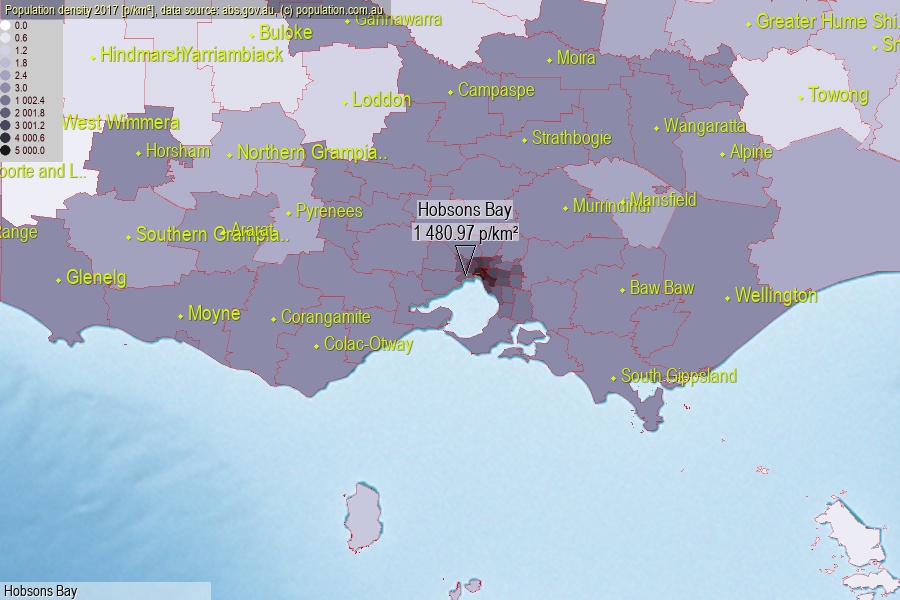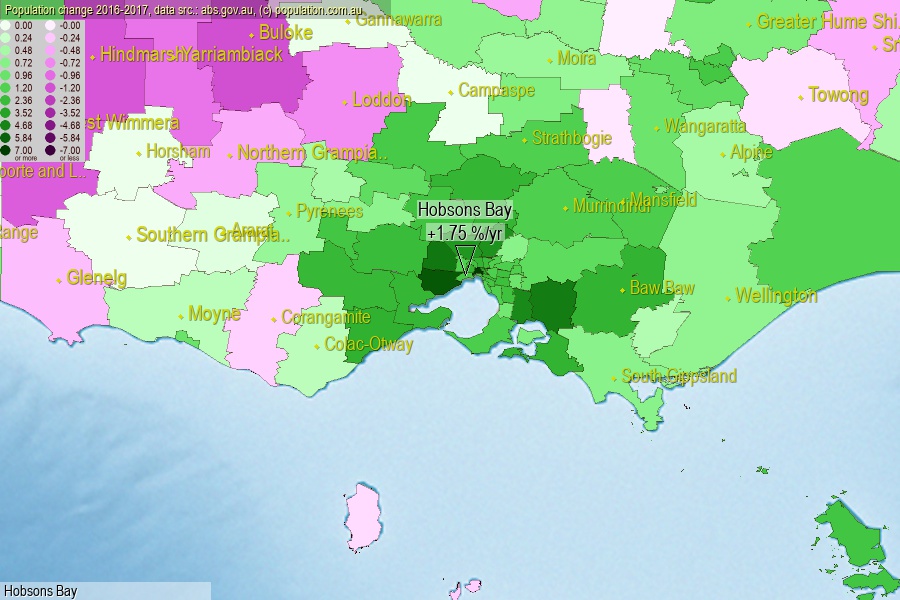 population.com.au
population.com.auLast official estimated population of Hobsons Bay City (as Local Government Area) was 95 078 people (on 2017-06-30)[2]. This was 0.38% of total Australian population and 1.479% of VIC population. Area of Hobsons Bay is 64.20 km², in this year population density was 1 480.97 p/km² . If population growth rate would be same as in period 2016-2017 (+1.75%/yr), Hobsons Bay population in 2025 would be 109 212. [0]



Click to enlarge. Hobsons Bay is located in the center of the images.
Population [people], population density [p./km²] and population change [%/year] [2]
[1996-2001] +1.28 %/Y
[2001-2002] +0.33 %/Y
[2002-2003] -0.02 %/Y
[2003-2004] -0.53 %/Y
[2004-2005] +0.39 %/Y
[2005-2006] +1.10 %/Y
[2006-2007] +1.09 %/Y
[2007-2008] +0.82 %/Y
[2008-2009] +1.47 %/Y
[2009-2010] +0.49 %/Y
[2010-2011] +0.23 %/Y
[2011-2012] +1.08 %/Y
[2012-2013] +0.96 %/Y
[2013-2014] +1.38 %/Y
[2014-2015] +1.39 %/Y
[2015-2016] +1.93 %/Y
[2016-2017] +1.75 %/Y
[0] Calculated with linear interpolation from officially estimated population
[1] Read more about LGA and Australian Statistical Geography Standard (ASGS) on abs.gov.au
[2] Population data from Australian Bureau of Statistics (Population and density: 2017; change: 2016-2017)
[3] Digital Boundaries: Australian Statistical Geography Standard (ASGS) 2016.